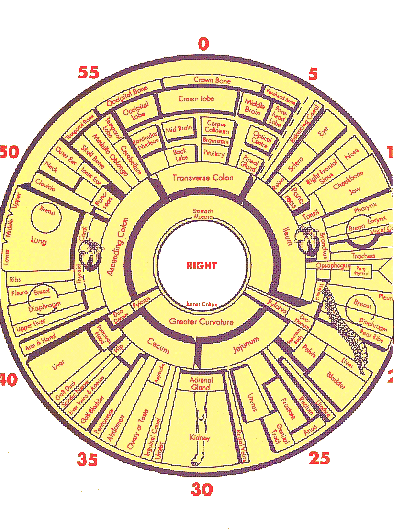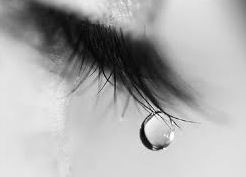December 23rd, 2011 by Steve Novella, M.D. in Quackery Exposed
No Comments »

 There are many medical pseudosciences that persist despite a utter lack of either plausibility or evidence for efficacy. Some practices emerged out of their culture of origin, or out of the prevailing ideas of a pre-scientific age, while others were manufactured out of the imagination of perhaps well-meaning but highly misguided individual practitioners. They were just made up – homeopathy, for example, or subluxation theory.
There are many medical pseudosciences that persist despite a utter lack of either plausibility or evidence for efficacy. Some practices emerged out of their culture of origin, or out of the prevailing ideas of a pre-scientific age, while others were manufactured out of the imagination of perhaps well-meaning but highly misguided individual practitioners. They were just made up – homeopathy, for example, or subluxation theory.
Iridology belongs to this latter category – a system of diagnosis that was invented entirely by Ignatz Peczely, a Hungarian physician who first published his ideas in 1893. The story goes that Peczely as a boy found an owl with a broken leg. At the time he noticed a prominent black stripe in the iris of one eye of the owl. He nursed the bird back to health and then noticed that the black line was gone, replaced by ragged white lines. From this single observation Peczely developed the notion of iridology.
Peczely’s idea was that the iris maps to the rest of the body in some way, and therefore the flecks of color in the iris reflect the state of health of the various body parts. This basic approach to diagnosis or treatment is called the homonculus approach – the idea that one part of the body maps to the rest of the body, including the organ systems. Reflexology, auricular acupuncture, and even straight chiropractic follow this approach.
This is what might have happened next: Read more »
*This blog post was originally published at Science-Based Medicine*
April 20th, 2011 by IsisTheScientist in Research
1 Comment »

These last several weeks I have been absolutely overwhelmed with science, meetings, writing, and reviews. I might complain, but I should also be flattered that I am as busy as I am. Mama is in demand, little muffin. Still, things are beginning to slow down to a tolerable level on my end, which means I will be back to blogging.
Today I was working on some writing when I had cause to review some historical texts. It gives me pause to stop and consider things that we take for granted. For example, think about how blood flows through the heart and lungs…

Figure 1: Blood flows from right to left, across the lungs.
I can’t tell you how many times a day I look at a heart and take for granted that blood should flow from the venous circulation, into the right side of the heart, across the lungs, back to the left side of the heart, and out to the arterial circulation. When all is right with the world, such is the way it should be.
But, we didn’t always know that. Read more »
*This blog post was originally published at On Becoming a Domestic and Laboratory Goddess*
February 16th, 2011 by Glenn Laffel, M.D., Ph.D. in Better Health Network, Research
1 Comment »

 Humans are the only living things that cry when they are overcome with emotion. Why do we do this?
Humans are the only living things that cry when they are overcome with emotion. Why do we do this?
A study by Noam Sobel and colleagues at the Weizmann Institute provide part of the answer, at least as it relates to women. The scientists showed that when men get a whiff of women’s tears, they experience a temporary, generalized loss of libido and a dip in testosterone. Really. (And you thought that red, runny nose was the turn off, didn’t you?)
Scientists have known for decades that the chemical composition of “emotional tears” differs from tears shed due to simple irritation. But now, it appears that some of the chemicals contained in the former are actually pheromones; biological substances that create behavioral changes in others who are exposed to them. Such chemicals were known to exist in urine in anogenital gland secretions (dont ask), but not in tears.
Sobel’s team began its study by posting ads on Israeli college campus bulletin boards in which they sought volunteers who cried easily. Seventy-one people responded. All but one were women. From that group, the scientists identified six who were profuse criers and who could return to their labs every other day.
The scientists then asked each one to select a movie that was guaranteed to make them break down, to watch it in private, and to collect their tears in a vial. For the controls, Sobel’s group trickled a saline solution down the same women’s cheeks and collected that. Sobel’s group subsequently asked male volunteers to sniff the contents of the two vials and ran a battery of psychological and physiological tests to measure their responses. Read more »
*This blog post was originally published at Pizaazz*
December 22nd, 2010 by John Mandrola, M.D. in Better Health Network, Health Tips, News, Opinion, Research
No Comments »

 It’s the time of the year when dietary temptations lurk around every corner of the hospital. And since completely abstaining is not always possible, the best antidote for this holiday deluge of inflammation is obvious: Exercise.
It’s the time of the year when dietary temptations lurk around every corner of the hospital. And since completely abstaining is not always possible, the best antidote for this holiday deluge of inflammation is obvious: Exercise.
No doubt, within the boundaries of common sense, all exercise is good. But is there a best time of day to exercise?
Tara Parker-Pope’s New York Times piece suggests that the most “productive” time of day to exercise is before breakfast. In concisely reviewing a Belgian exercise physiology study, Ms. Parker-Pope points out that, in blunting the undesirable effects of a high fat and sugar diet, pre-breakast (fasting) exercise was metabolically more efficient than was exercise later in the day. That’s really good news for the overweight middle-agers who consistently say: “I really don’t eat very much. I must have a slow metabolism.”
Scientific studies are one thing, but are they validated in the court of real life? Read more »
*This blog post was originally published at Dr John M*
September 20th, 2010 by IsisTheScientist in Better Health Network, Health Policy, Opinion, Research
10 Comments »

One of the disturbing trends I have been observing in physiology is the tendency to move away from many of the gold standard, invasive measurements classically described in the scientific literature to non-invasive measures which may or may not accurately reflect the parameter of interest.
One of these non-invasive measurements (which is not used in any of the manuscripts on my desk) that has become the bane of my existence is to use the saturation of hemoglobin in arterial blood (SPO2) as a surrogate for the partial pressure of arterial blood (PO2). SPO2 is measured with a device called a pulse oximeter.

Figure 1: A fingertip pulse oximeter. This device indicates that this individuals arterial hemoglobin is 98 percent saturated and his heart rate is 73 beats/min. Read more »
*This blog post was originally published at On Becoming a Domestic and Laboratory Goddess*
 There are many medical pseudosciences that persist despite a utter lack of either plausibility or evidence for efficacy. Some practices emerged out of their culture of origin, or out of the prevailing ideas of a pre-scientific age, while others were manufactured out of the imagination of perhaps well-meaning but highly misguided individual practitioners. They were just made up – homeopathy, for example, or subluxation theory.
There are many medical pseudosciences that persist despite a utter lack of either plausibility or evidence for efficacy. Some practices emerged out of their culture of origin, or out of the prevailing ideas of a pre-scientific age, while others were manufactured out of the imagination of perhaps well-meaning but highly misguided individual practitioners. They were just made up – homeopathy, for example, or subluxation theory.


















